I got a tip on the hummingbird out in Ft. Atkinson, Jefferson Co. Wisconsin at a private residence. I had hoped to get some shots to help in the ID’ing this bird. Cynthia had some excellent shots of this bird. The bird has been confirmed as a female Rufous Hummingbird, Selasphorus rufus. I was there for a couple of hours and it was gloomy with light rain the whole time. I apologize for some of these images as they are not the best, but for ID purposes I put them up. The bird hit the same feeder each time it came into the yard, which was under an overhang. I never saw the bird sit perched out in the open, probably because of the light rain that never stopped. One time after feeding I saw it fly into a large spruce tree, so it probably was hanging out in that tree under cover between feedings which were about every 30-45 minutes. This bird very seldom spread its tail feathers while I was present. Wow, what a beautiful bird! Thanks to who got the information out on this bird! Images were taken on October 15, 2014.
Rufous Hummingbird
Binomial name: Selasphorus rufus
Category: Hummingbirds
Description: Primarily rust-colored feathers with a small patch of white on the chest. Red-orange patch on throat. Short wings and a slender, slightly sloping bill.
Size: 2.8″-3.5″ long, 3” – 4” wingspan
Weight: 0.071 oz. – 0.18 oz
Habitat: Open broadleaf forests, orchards, meadows, parks, swamps, and yards
Natural Range: West Coast from Alaska to Mexico and Rocky Mountains, wintering in the Gulf Coast and Southeastern Atlantic states. They are occasionally, although rarely, found in cold-weather areas such as the Midwest due to their surprising hardiness.
Diet: Tree and flower nectar, small insects, and hummingbird feeders
Nesting: The males may mate with several females but do not care for the young. The female provides all parental care, building a nest in a protected tree or shrub. They favor either deciduous or coniferous trees such as spruce, cedar, maples, pines, birch, and hemlocks. The nest is made out of bud scales, lichen, spider silk, and dandelion or thistle down. The same nest may be used year after year and not necessarily by its previous occupant. The female will lay 2-3 eggs at a time, laying 1 brood per summer. She incubates the eggs for 15-17 days, and the young remain in the nest for 15-19 days.
Notes: This high-strung bird is considered extremely aggressive and will chase other animals from feeders or its nest including larger birds, chipmunks, and even other hummingbirds. Like other hummingbirds, Roufus Hummingbirds are adept flyers and can hover, dart, and perch with ease. They have even been seen to pluck insects out of midair.
If you care to view images of the Rufous Hummingbird that visited a private residence in Sheboygan Wisconsin October 27, 2013, please click here.


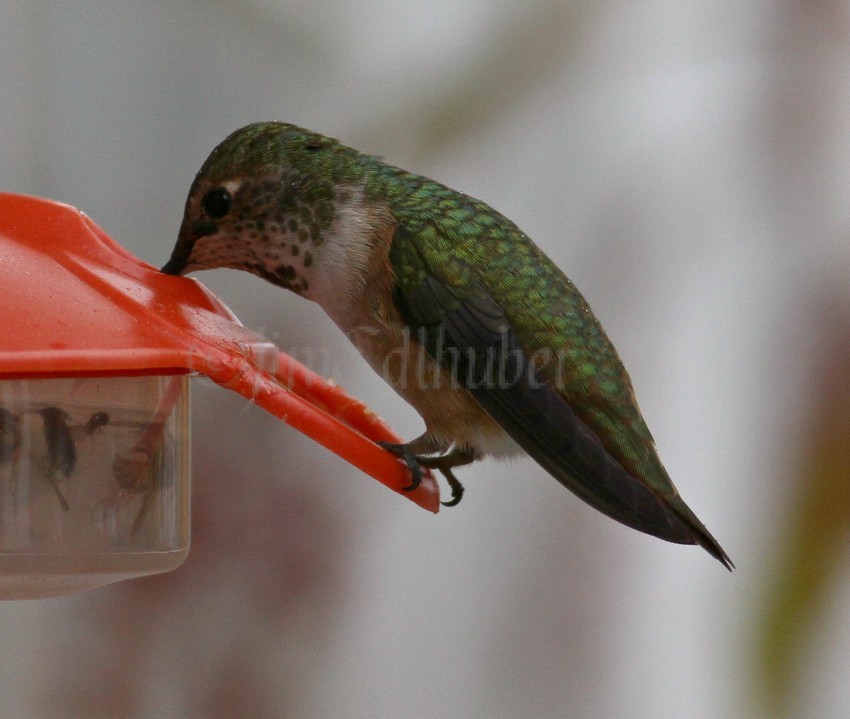


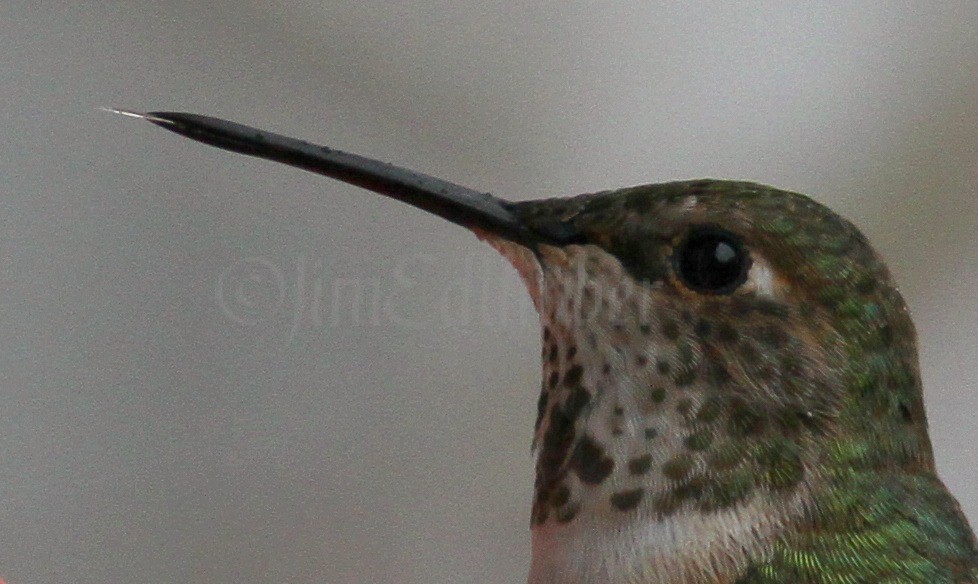
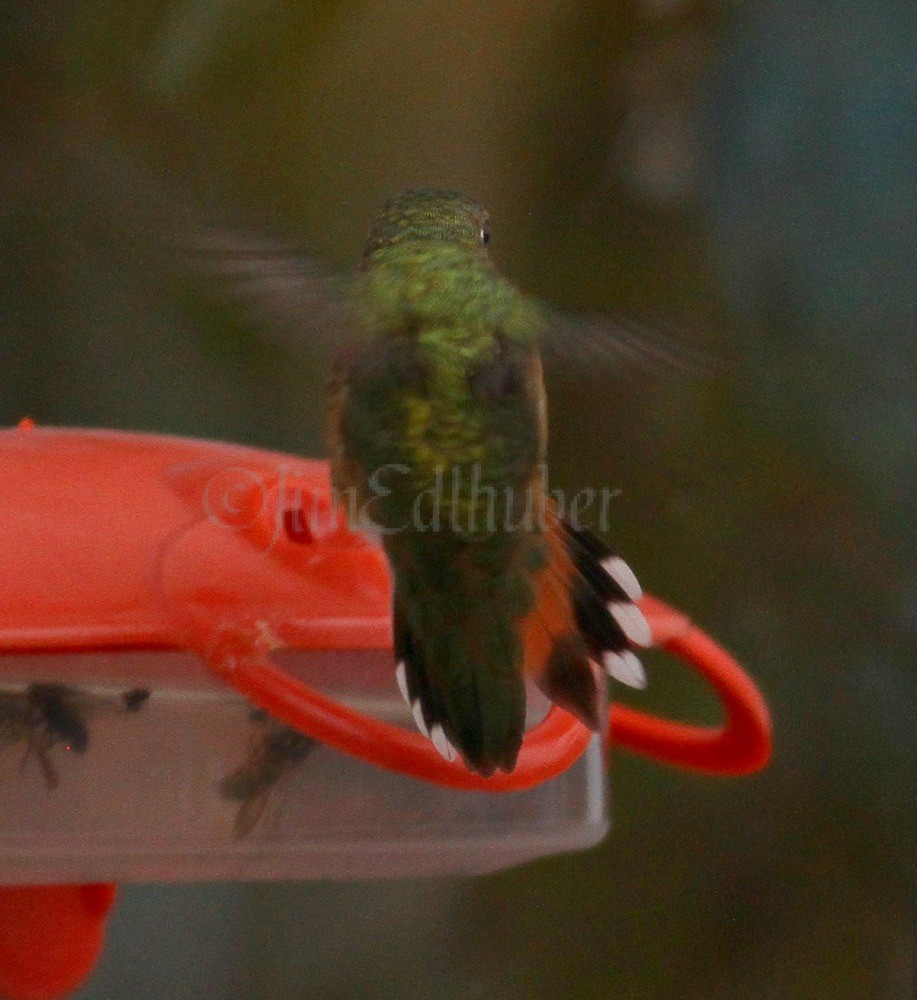
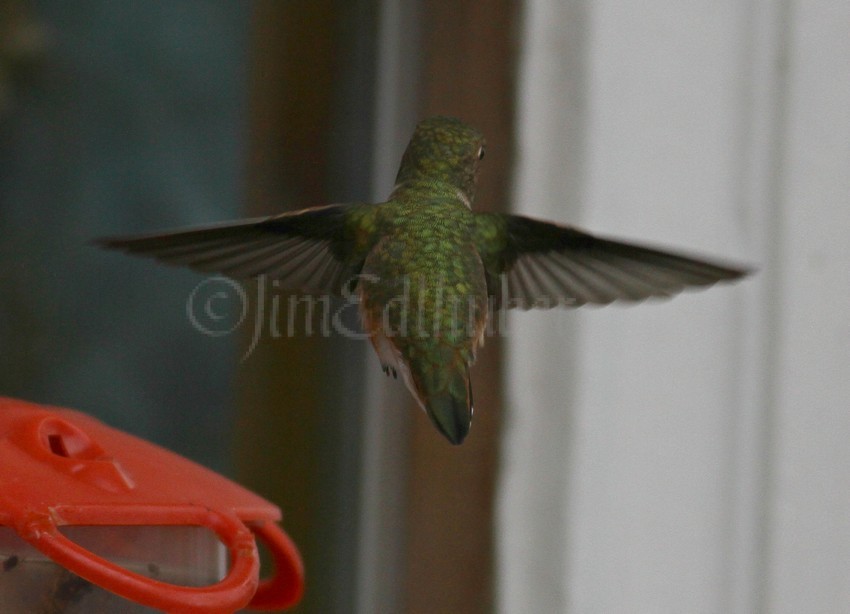
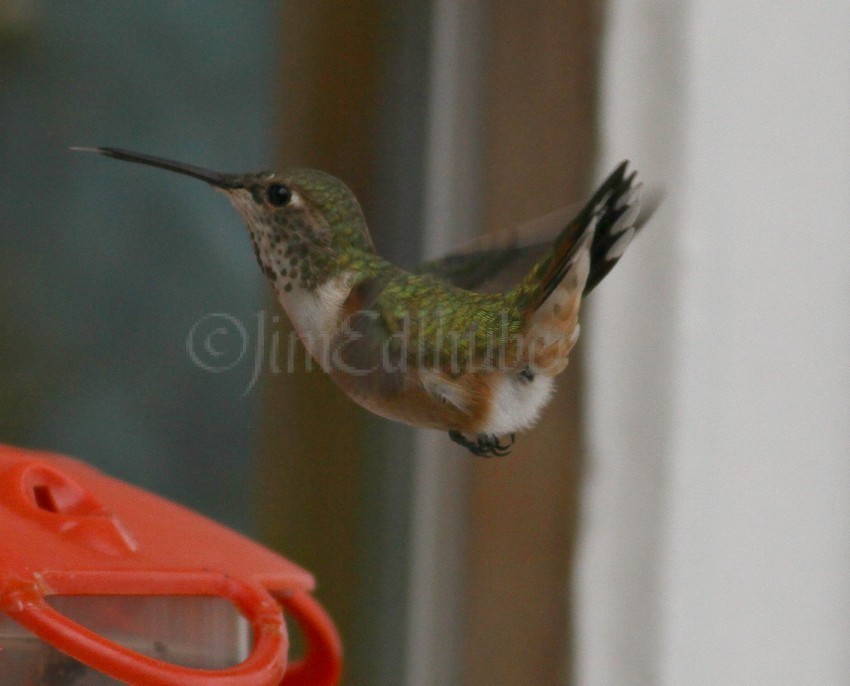


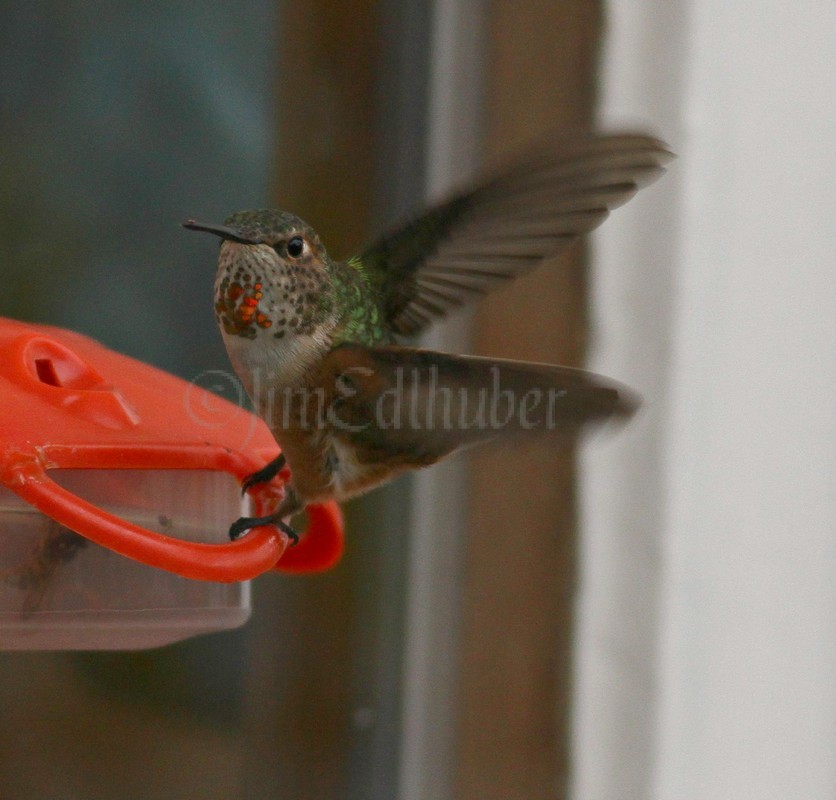
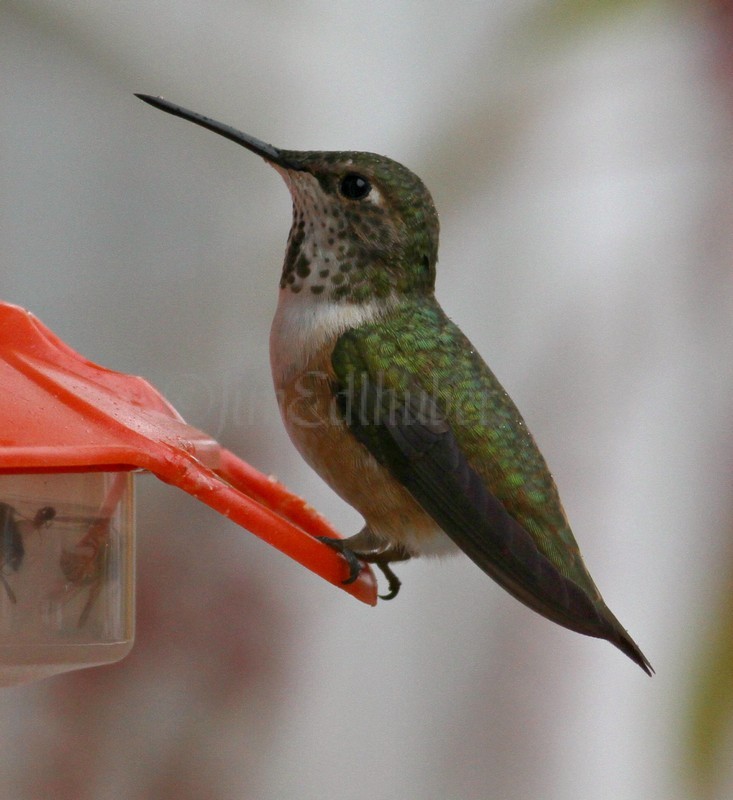
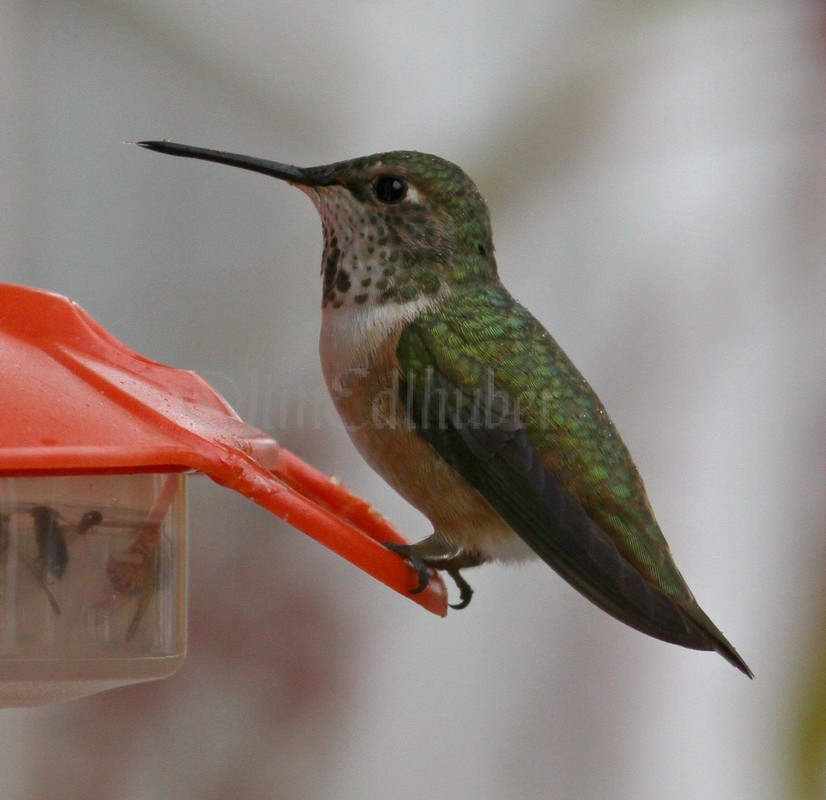
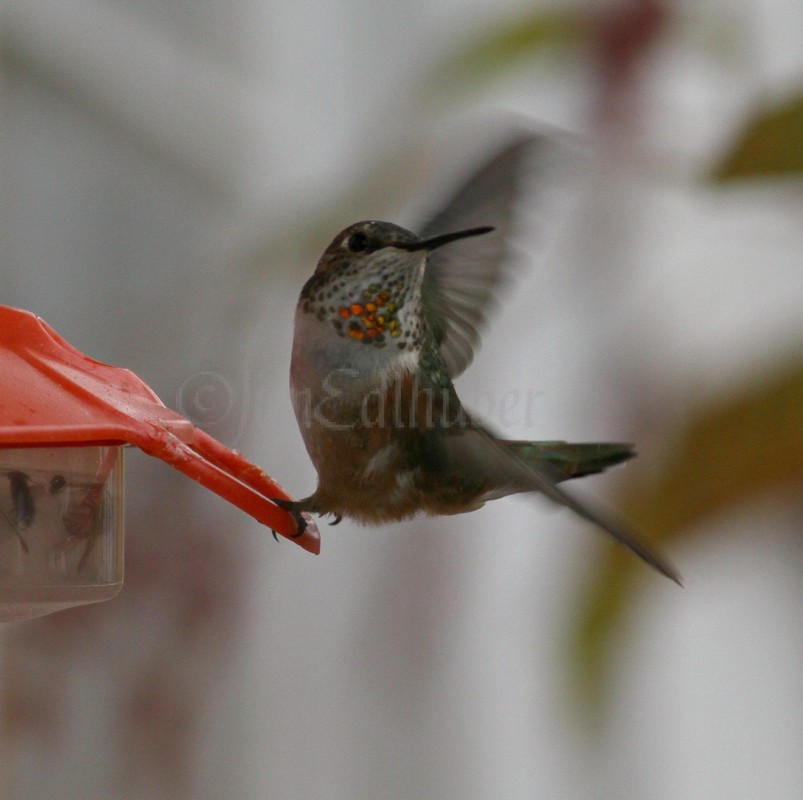
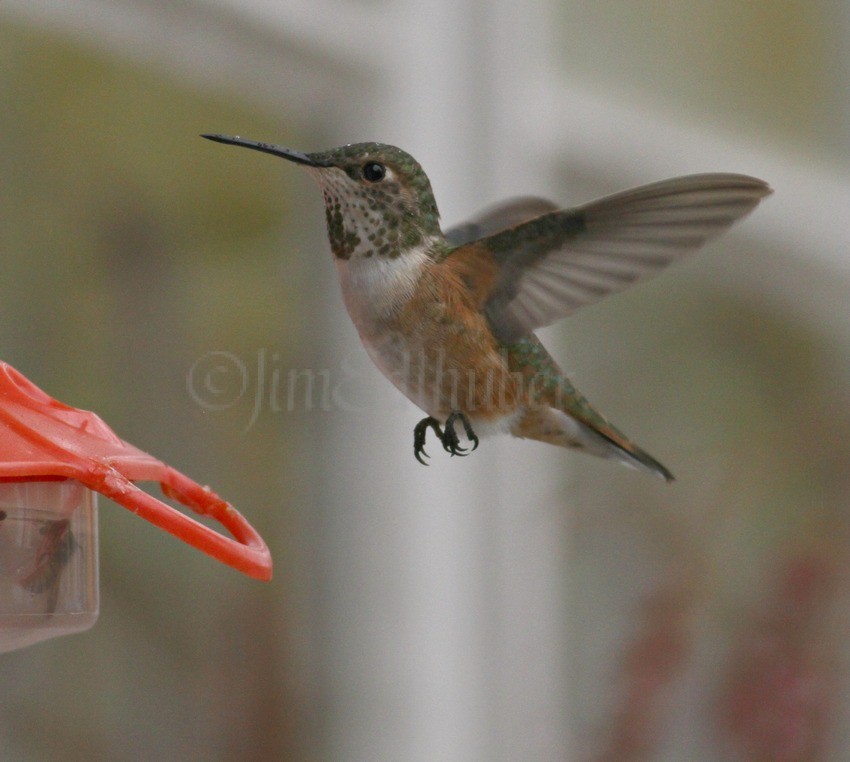


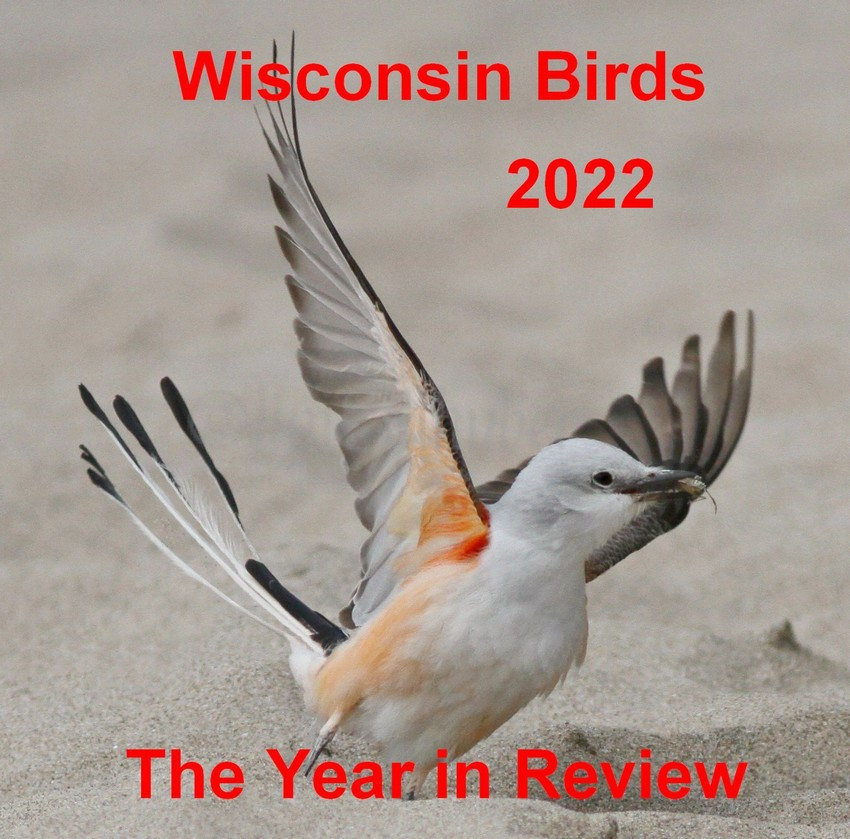
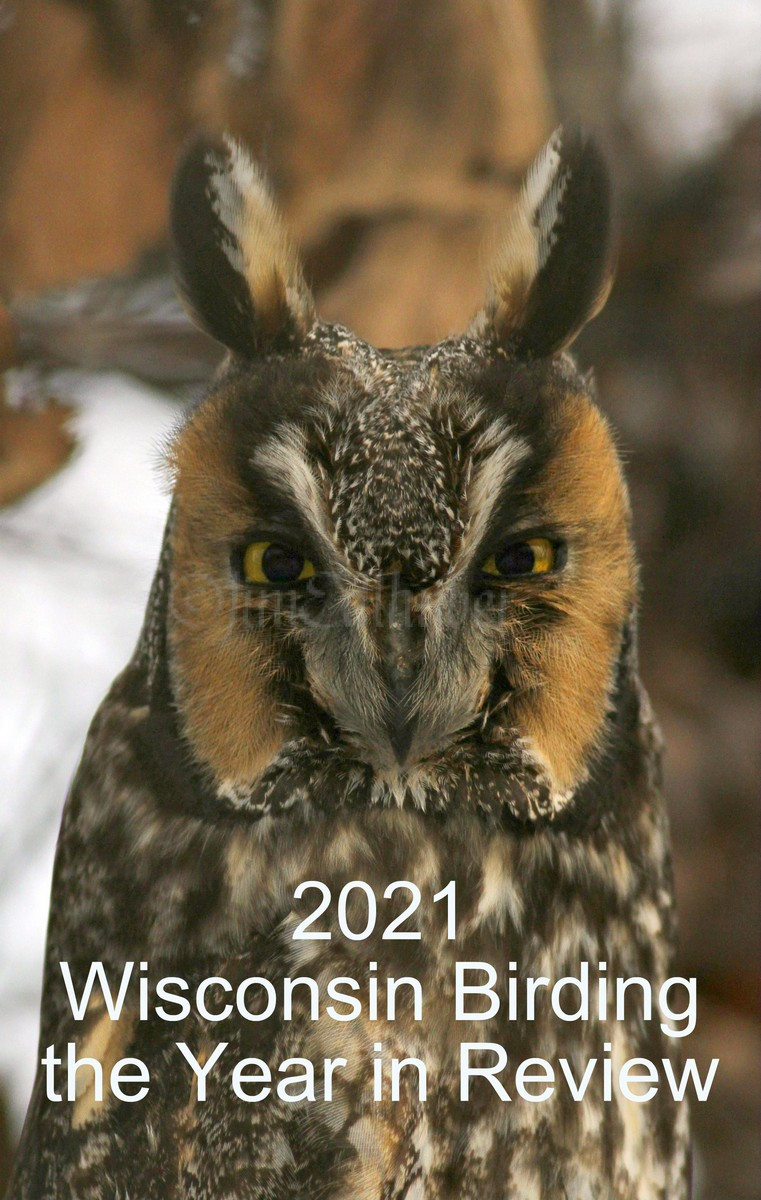


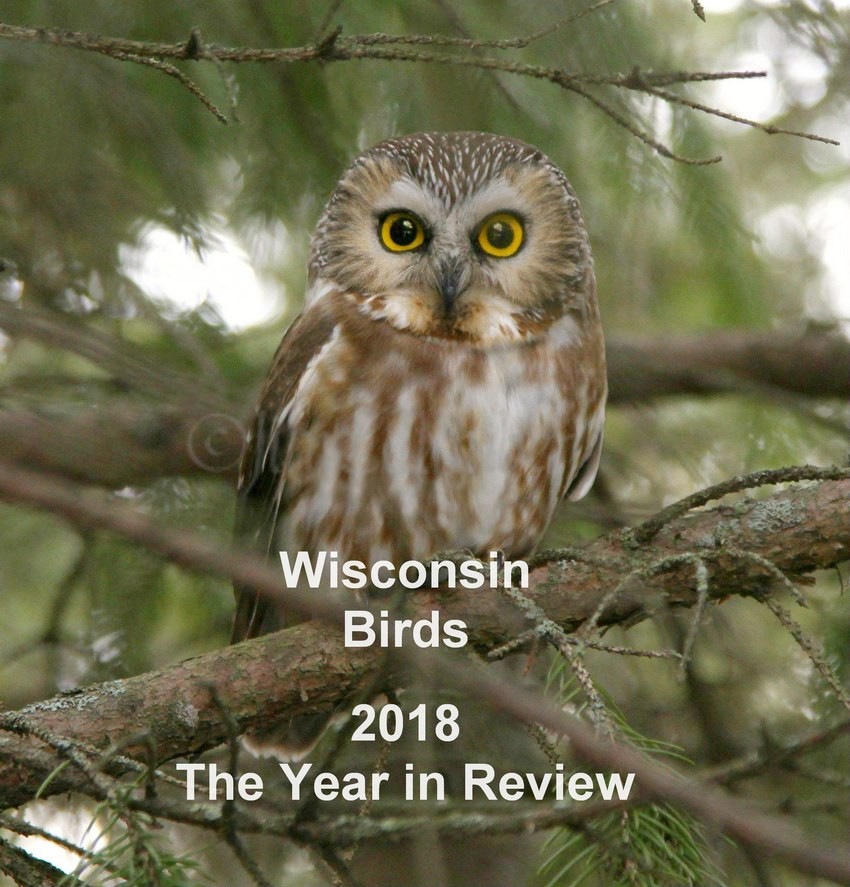
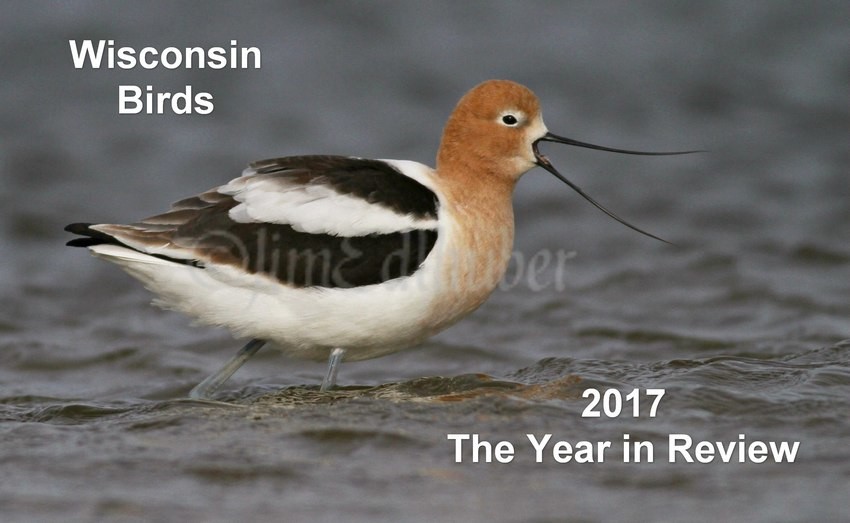
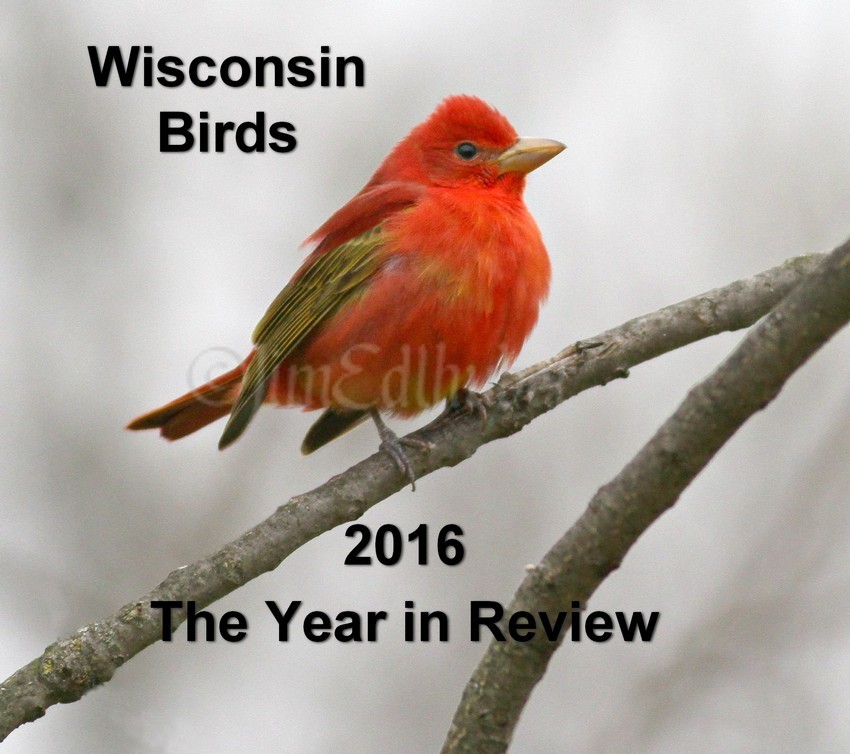
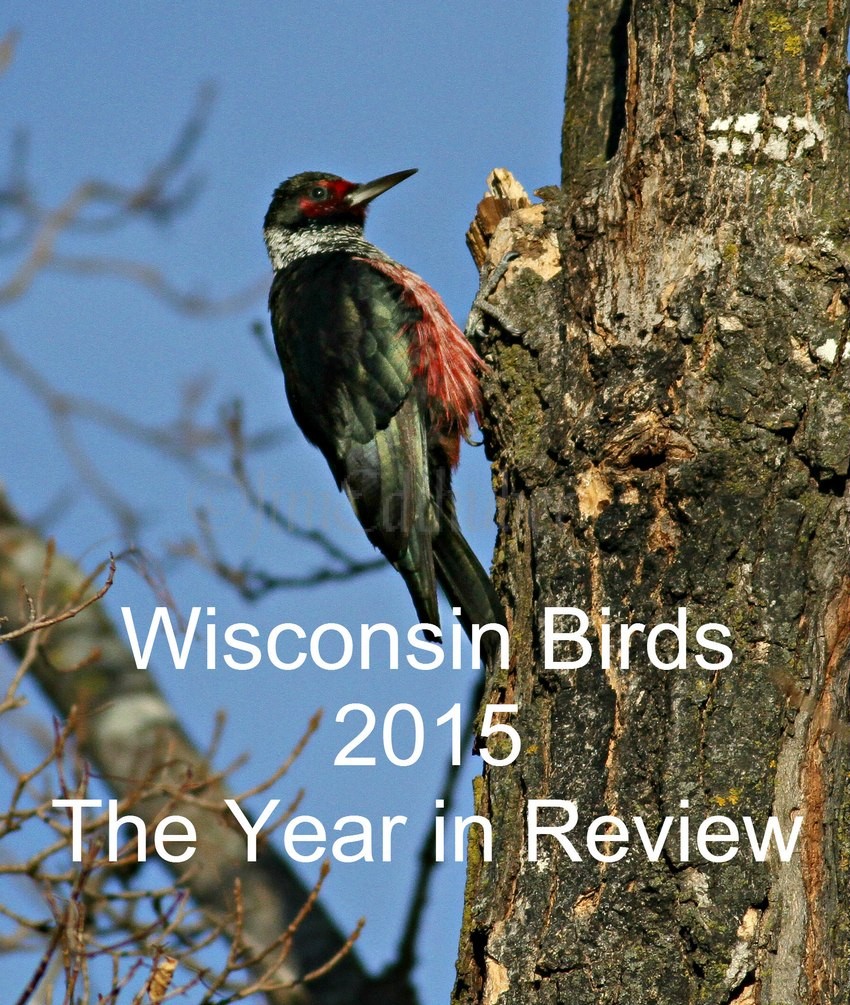


Jim, nice catch on the Rufous! You’ve really got the knack for snapping these lovelies! Nice, nice, nice!!!
What a beautiful creature. Wet and rainy, yet Jim still manages to capture that hidden iridescense – like a rainbow we’re privileged to see. How could this little mite of a bird be extremely aggressive? I love to imagine what that looks like in action…
Wonderful pictures despite the dreary weather. Thanks for sharing.
Really excellent photos. These helped me identify a male that has been visiting one of my feeders. A female visits a different feeder. I’ve never seen them switch feeders.
Thank you 😊